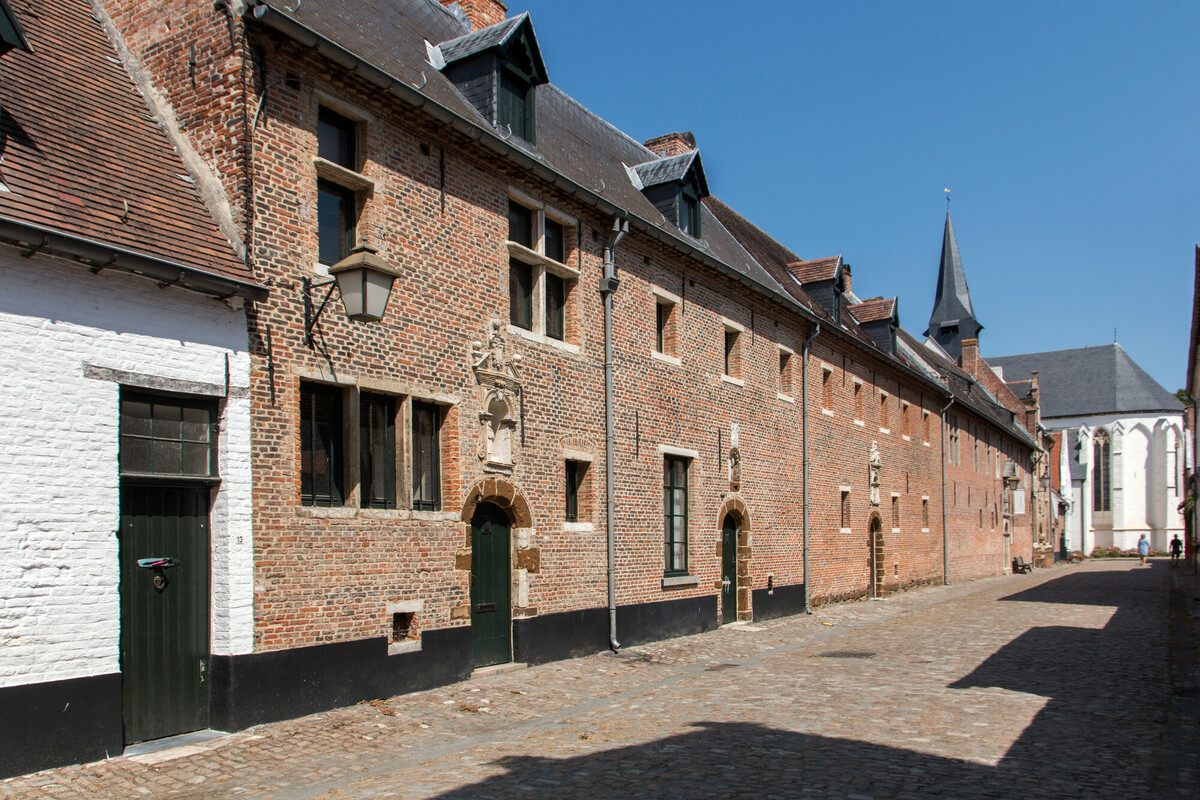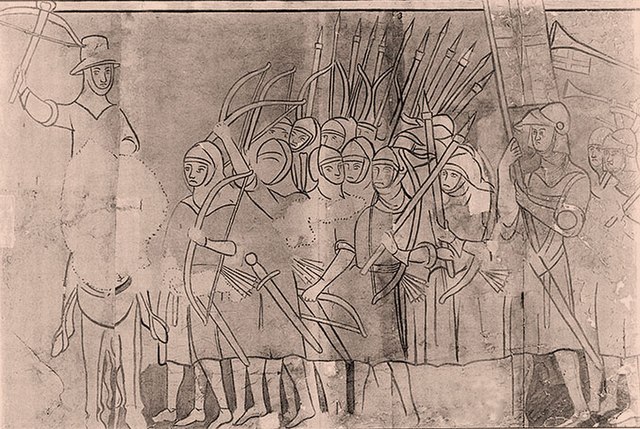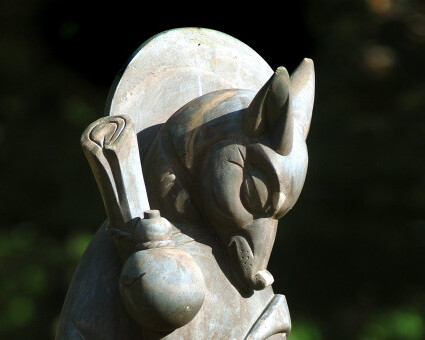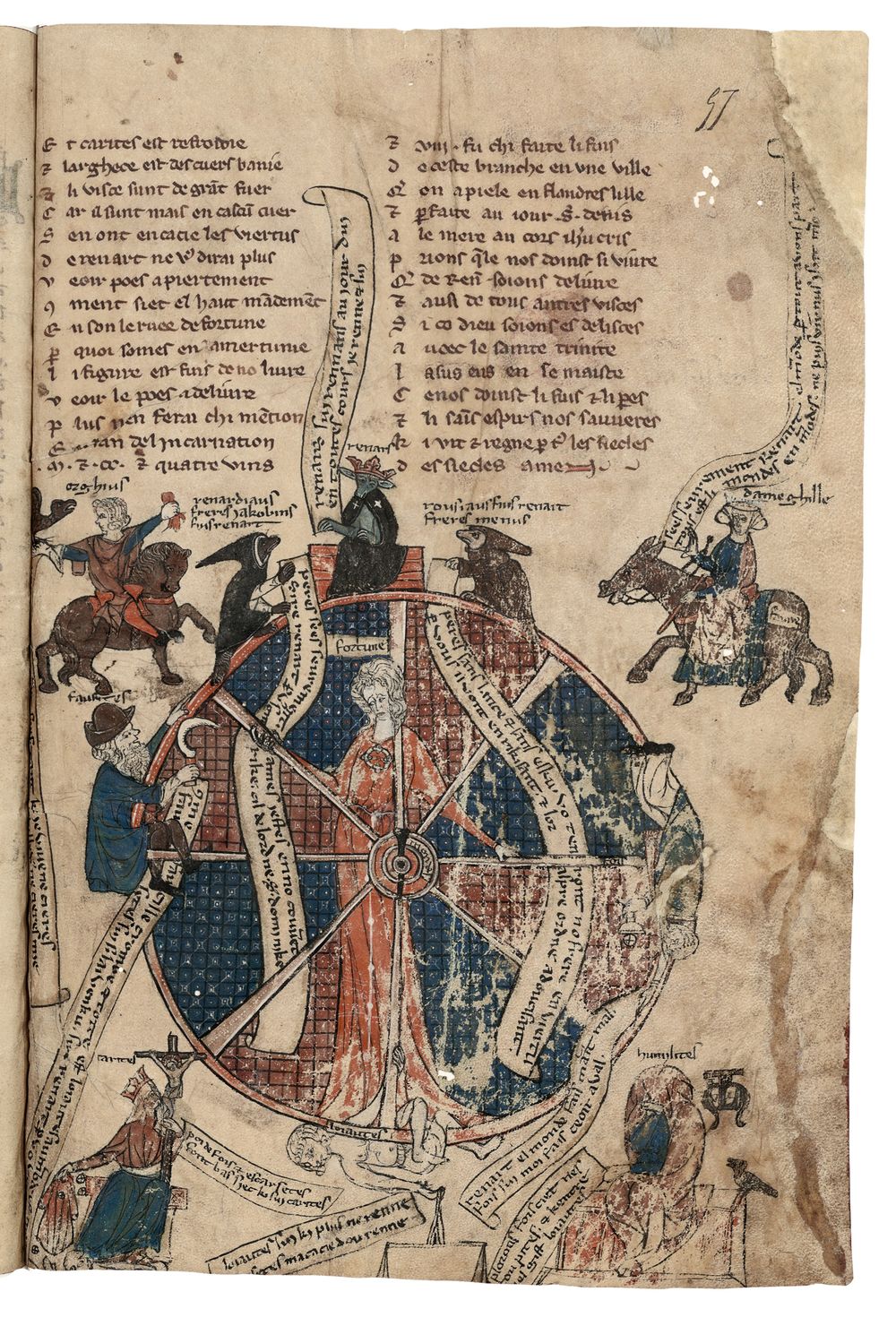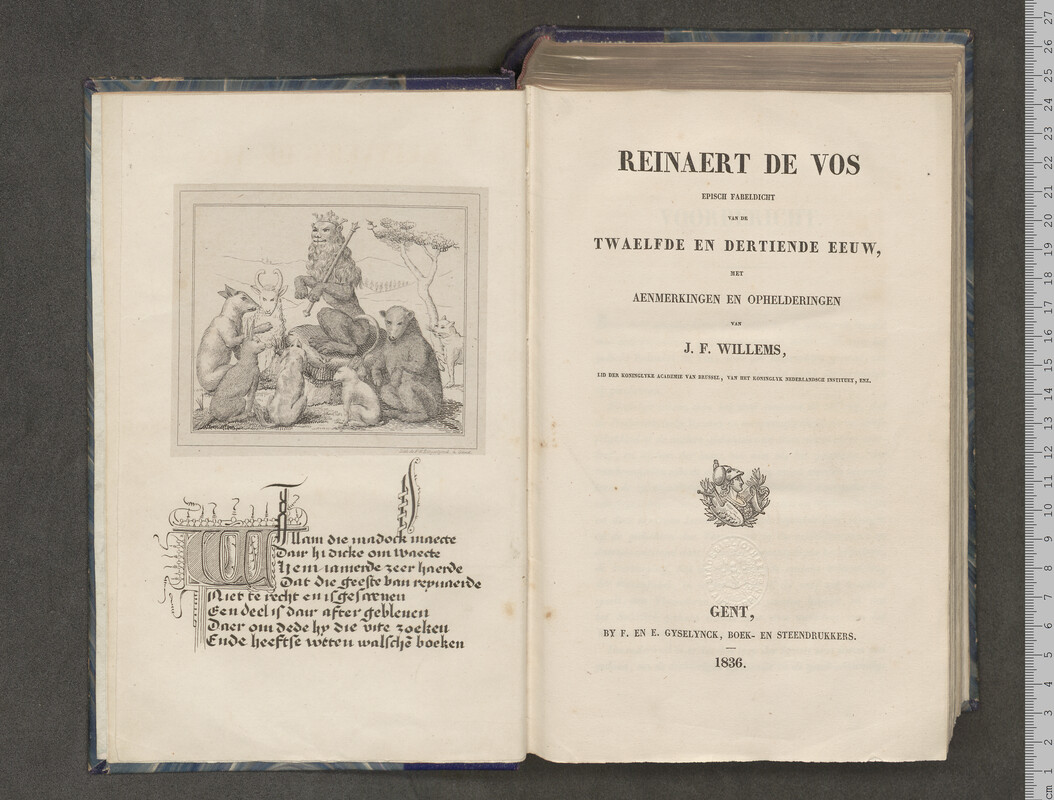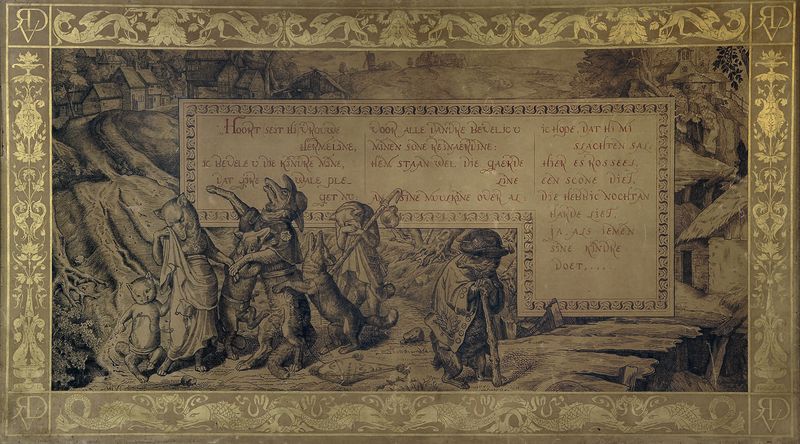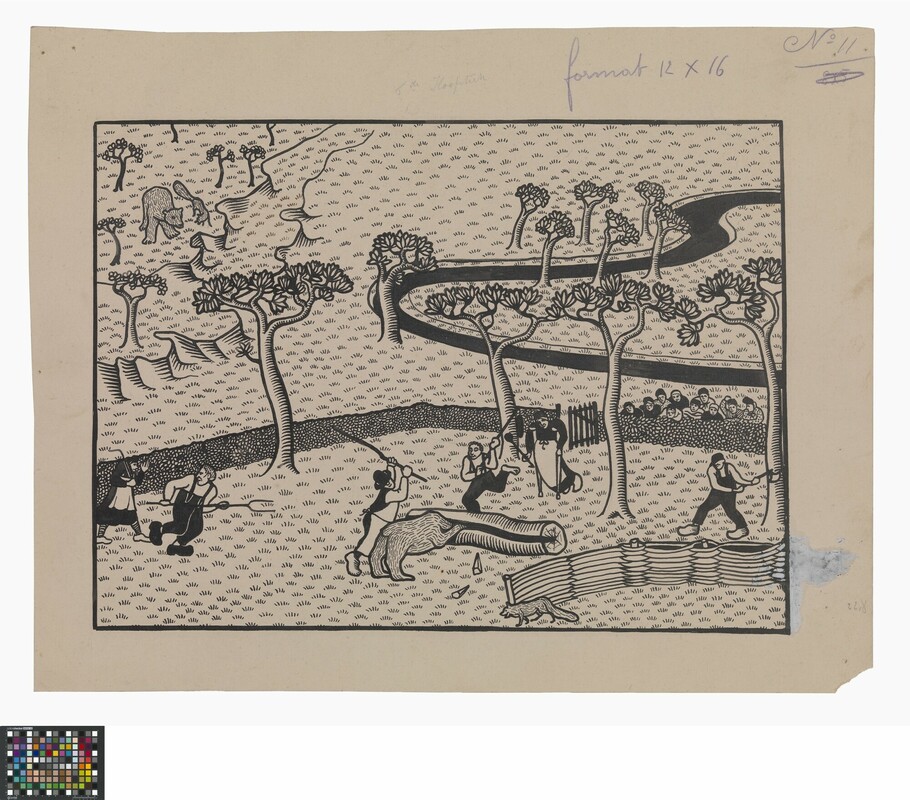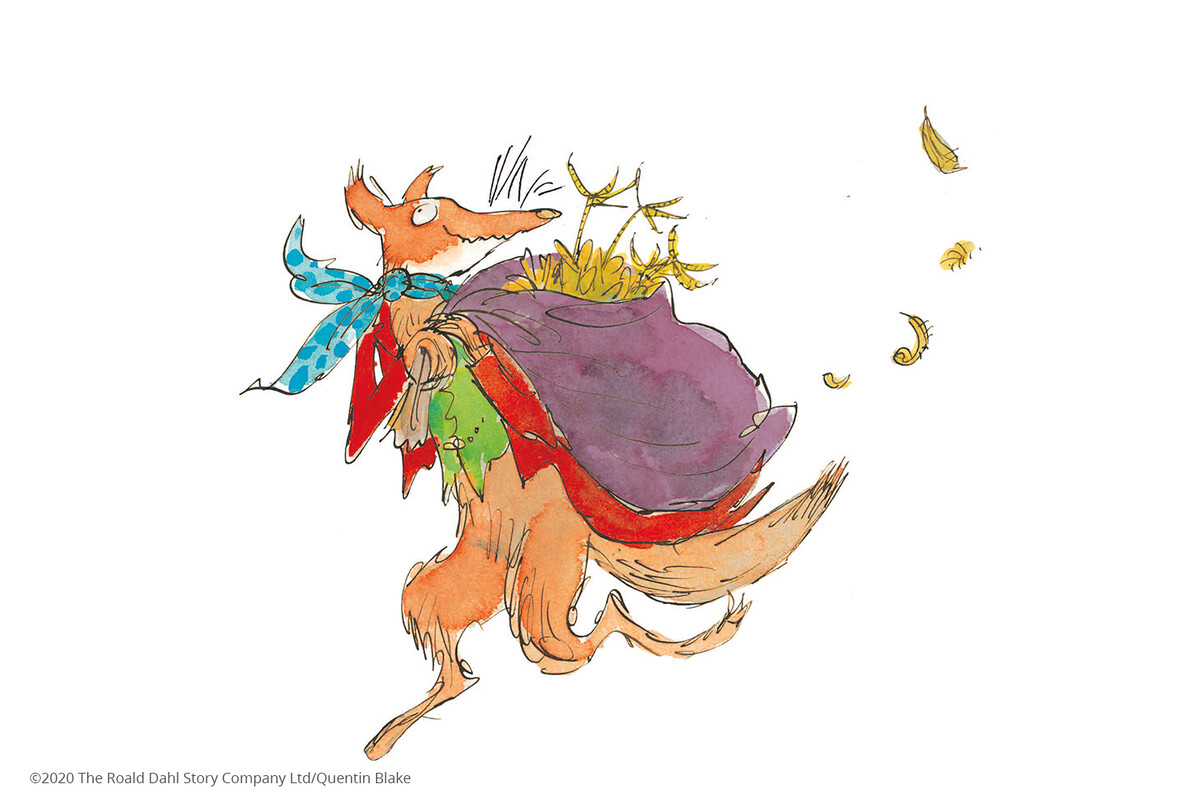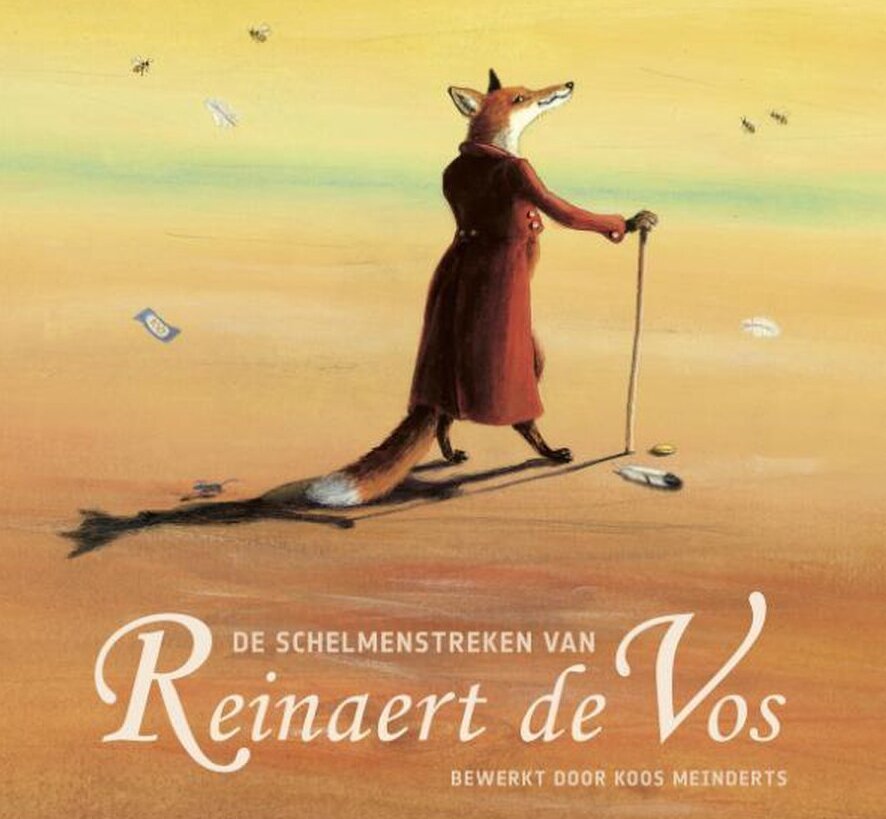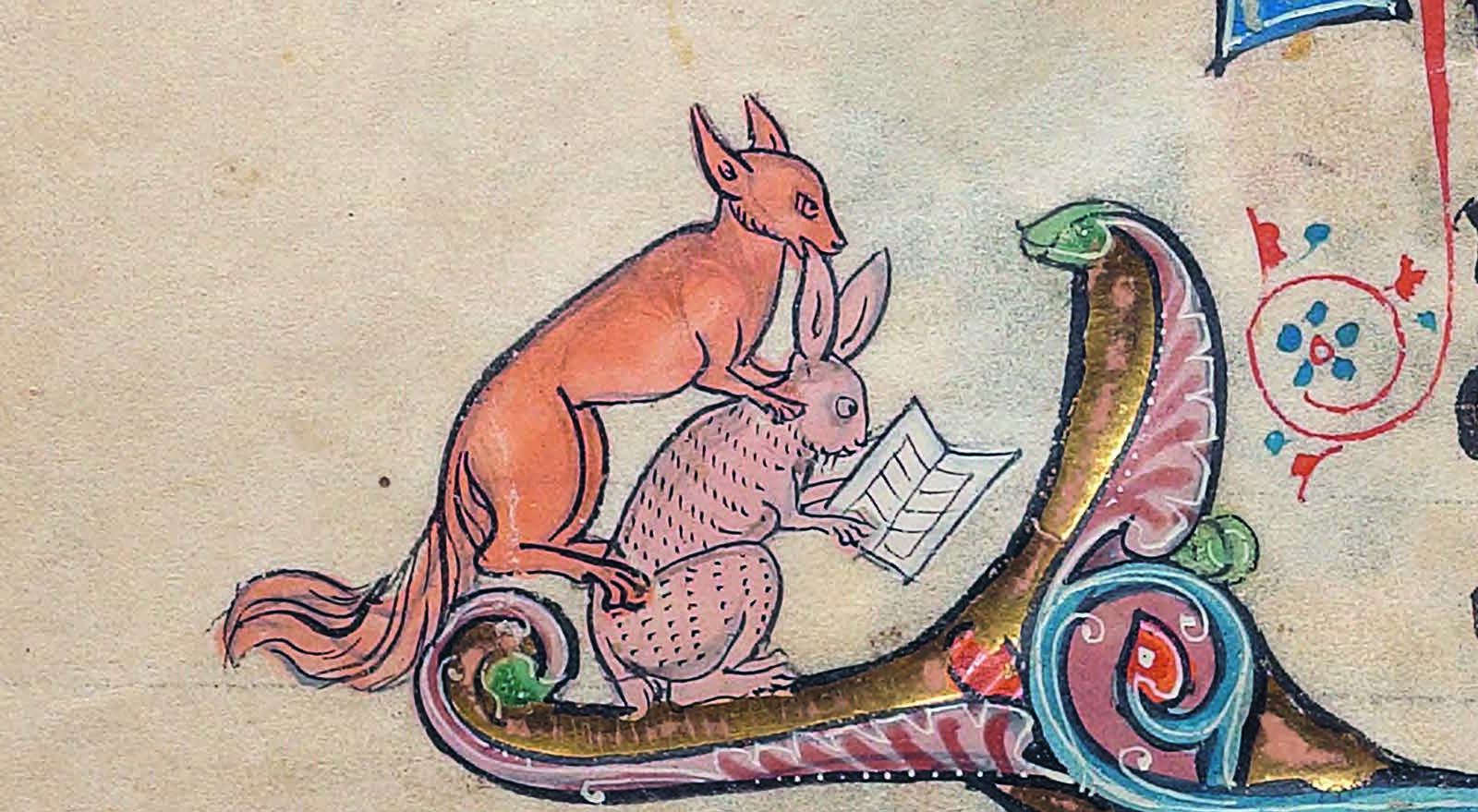
Reynard the Fox (Reynaert de Vos) gives Cuwaert the hare ‘singing lessons’. Illustration in the margin of a manuscript that originated around 1280-1290 in the vicinity of the count’s residence | New Haven, Connecticut, Beinecke Rare Book and Manuscript Library, public domain
Reynard the Fox
Literature in the Vernacular
In around 1260 a certain Willem, about whom little else is known, wrote a story in verse about the sly fox Reynard. Vanden vos Reynaerde is one of the oldest texts in Dutch. With its flashes of humour, its often obscene ambiguities and voluptuous cruelty the adventures of Reynard became incredibly popular. And they have remained so until today.
Reynard is clearly no sweetie. He is out for his own advantage, lies and deceives for all he is worth and does not even shrink from murder. Because he has broken the laws of king Nobel he has to appear before the king’s court and is condemned to death. But Reynard dreams up all kinds of excuses and wicked plans to save his skin. With his scheming behaviour he demonstrates how selfish the king and the whole animal kingdom are. Civilisation is just a beautiful veneer. In reality all the animals act out of self-interest.
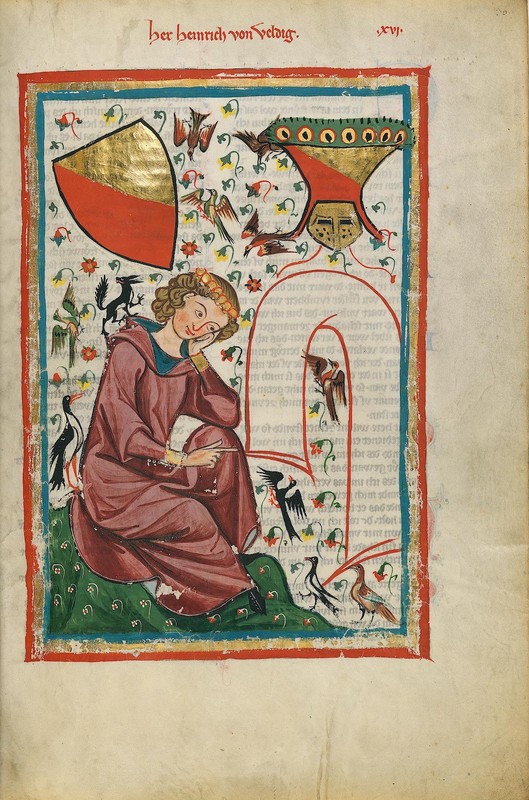
Heidelberg Universitätsbibliothek, cpg 848, fol. 30r
Miniature of Hendrik van Veldeke in the Große Heidelberger Liederhandschrift, beginning of the 14th century.
Literature in the Vernacular
In the Middle Ages there was still no standard Dutch language. There was a multiplicity of dialects, which are collectively called ‘Middle Dutch’. Scholars and clerics used mostly Latin. At the courts of the Flemish counts and the dukes of Brabant and in the high nobility people generally read French. Chivalrous romances and animal stories were popular in these circles.
The Maaslander Hendrik van Veldeke is the first author of a literary text in Middle Dutch to be known by name. In around 1170-1180, commissioned by Agnes countess of Loon and the treasurer of the Saint Servatius church in Maastricht, he wrote a life of St Servatius. A little later there appeared also in Flanders and Brabant literary texts in Middle Dutch, probably at the request of lesser nobles and rich burghers. Like Vanden vos Reynaerde, they were often adaptations of French-language models.
Not everyone was happy with those imaginative stories. The Flemish poet Jacob van Maerlant wanted most of all to bring ‘usefulness and truth’ into the vernacular: useful and realistic texts. For this reason he concentrated on historical works, like the Spiegel Historiael, a ‘history of the world’ since creation. He also wrote the first nature encyclopaedia in Dutch. For this Van Maerlant based himself on learned texts in Latin. So works that were both fictional and informative appeared in Dutch.
Focal points
Discover more on this topic
Van den vos Reynaerde
Delta/Bakker, 2002.
Reinaerts streken: van 2000 voor tot 2000 na Christus
Davidsfonds, 2001.
Reynaert de vos: een kleine geschiedenis van het middeleeuwse dierenepos
Phoebus Foundation, 2018.
Reinaert de vos: de middeleeuwse satire hertaald
Lalito, 2014.
De Reynaert. Leven met een middeleeuws meesterwerk
Prometheus, 2023.
Handgeschreven wereld: Nederlandse literatuur en cultuur in de middeleeuwen
Prometheus, 2002.
Maerlants wereld
Prometheus, 2018.
Stemmen op schrift. Geschiedenis van de Nederlandse literatuur vanaf het begin tot 1300
Bert Bakker, 2006.
Wereld in woorden. Geschiedenis van de Nederlandse literatuur 1300-1400
Bert Bakker, 2013.
Fiction
Willem die Madoc maakte
Van Oorschot, 2022.
Reynaert de vos
Atlas, 2010. (16+)
De schelmenstreken van Reinaert de vos
Hoogland & Van Klaveren, 2018. (+10)
Suske en Wiske. De rebelse Reinaert (nr 257)
Standaard Uitgeverij, 1998.
Hoorspel over Reinaert de vos
2018. (8+)
